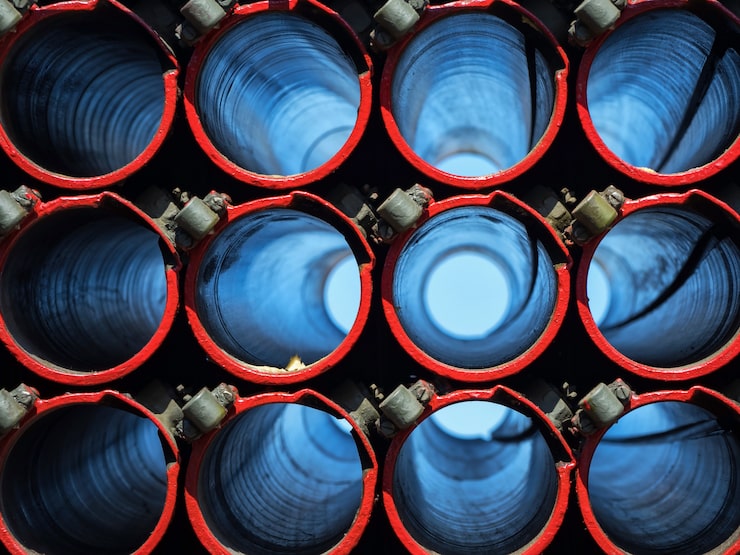When exploring modern piping technologies, one method that frequently comes up is HDPE electrofusion. High-Density Polyethylene (HDPE) has become a preferred material for pipelines in water distribution, gas networks, mining, and industrial systems. Its strength, flexibility, and resistance to corrosion make it highly reliable. However, the way HDPE pipes are joined is different from traditional materials like steel or copper. Instead of relying on threaded joints, adhesives, or welding rods, electrofusion provides a specialized technique that creates permanent, leak-free connections.
HDPE electrofusion is a welding process that uses electrically heated fittings to join two sections of HDPE pipe. The fittings are manufactured with built-in metal coils. When an electric current passes through these coils, they heat up, melting both the inside of the fitting and the outer surface of the pipe. As the materials cool, they fuse together, forming a strong, uniform joint. The result is a connection that is just as strong as the pipe itself, capable of withstanding internal pressure and environmental stresses over decades of service.

One of the most notable advantages of electrofusion is its ability to perform well in environments where other welding methods, such as butt fusion, may be challenging. For example, in narrow trenches, urban utility corridors, or repair situations, large butt fusion machines cannot always be used. Electrofusion only requires the pipe ends and a compact electrofusion control unit, making it far more convenient in confined spaces. This is one of the reasons why gas and water distribution companies often favor electrofusion in city infrastructure projects.
The process of performing HDPE electrofusion involves several precise steps. First, the pipe ends must be prepared carefully by cutting them square and scraping off the outer oxidation layer. This ensures that the surface in contact with the fitting is clean and reactive. Next, the pipe is inserted into the electrofusion fitting until it reaches the stop point. Clamps are often used to hold the pipe and fitting in place, preventing any movement during the welding cycle. Once the electrofusion control unit is connected, it automatically regulates the current and heating time according to the barcode on the fitting. After the heating cycle, a cooling period is required before the joint can be handled or subjected to pressure.
Quality control is essential in electrofusion welding. Even though the process looks simple, poor preparation or contamination can cause weak joints. Common issues include inadequate scraping, misalignment, or dirt entering the fitting before fusion. To avoid such risks, operators must be trained and follow international standards such as ISO and ASTM guidelines. Many industries also require pressure testing after installation to confirm the reliability of the joints.
In terms of applications, HDPE electrofusion is widely used in gas distribution systems. Because safety is critical in transporting natural gas, electrofusion’s ability to provide consistent, high-quality joints makes it a preferred choice. Similarly, in water supply networks, electrofusion helps prevent leakage, which is vital for resource conservation and efficiency. Mining and industrial operations also rely on electrofusion when pipelines must transport abrasive slurries or chemicals under demanding conditions.
Another reason electrofusion is so valuable lies in its adaptability to varying pipe sizes. While butt fusion is often better suited for very large pipes, electrofusion works well for small to medium diameters. This flexibility allows utility companies to use the method across a wide range of projects, from household service connections to municipal main lines. The fittings are available in many configurations, including couplers, elbows, tees, and tapping saddles, which makes it easy to design complex pipeline networks.
From an economic perspective, electrofusion fittings and control units may be more expensive than butt fusion equipment, but the overall cost-effectiveness often balances out. The ability to install pipes quickly in difficult locations reduces labor costs and minimizes disruption to existing infrastructure. In addition, the long-term durability of electrofusion joints reduces maintenance expenses, making them a sound investment over the lifespan of a pipeline.
Environmental factors also play an important role. Electrofusion can be performed in cold or wet conditions more reliably than other methods. Because the heating is contained within the fitting, external weather conditions have less influence on the welding process. This advantage is particularly useful in regions where pipelines are installed year-round under variable climates. Contractors can maintain quality and safety standards without needing extensive weather protection systems.
Looking at industry trends, the demand for HDPE electrofusion continues to grow as cities modernize their water and gas distribution networks. With global emphasis on sustainability and leak reduction, electrofusion helps meet efficiency goals by creating reliable, long-lasting connections. Technological improvements in fittings and fusion machines are also making the process faster and more user-friendly, which benefits contractors working on tight deadlines or large-scale projects.
For engineers, contractors, and utility operators, understanding what HDPE electrofusion is and how it works provides a practical advantage in planning and executing pipeline installations. It is not just a method of joining pipes; it is a system designed to ensure performance, safety, and reliability over decades of use. As urban infrastructure expands and industries demand more resilient solutions, electrofusion remains an essential technique in the world of HDPE piping.


